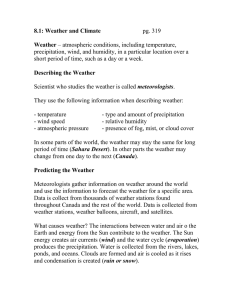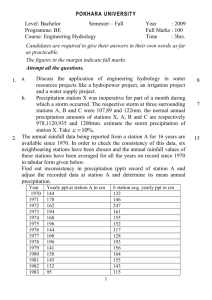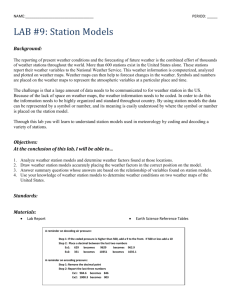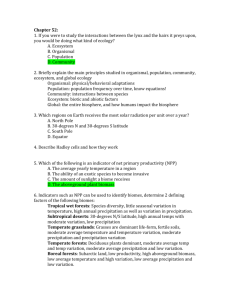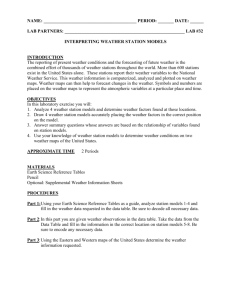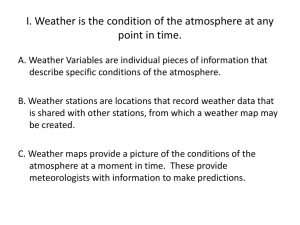EARTH FUTURES – LABORATORY 2: EXPLORING HISTORICAL
advertisement
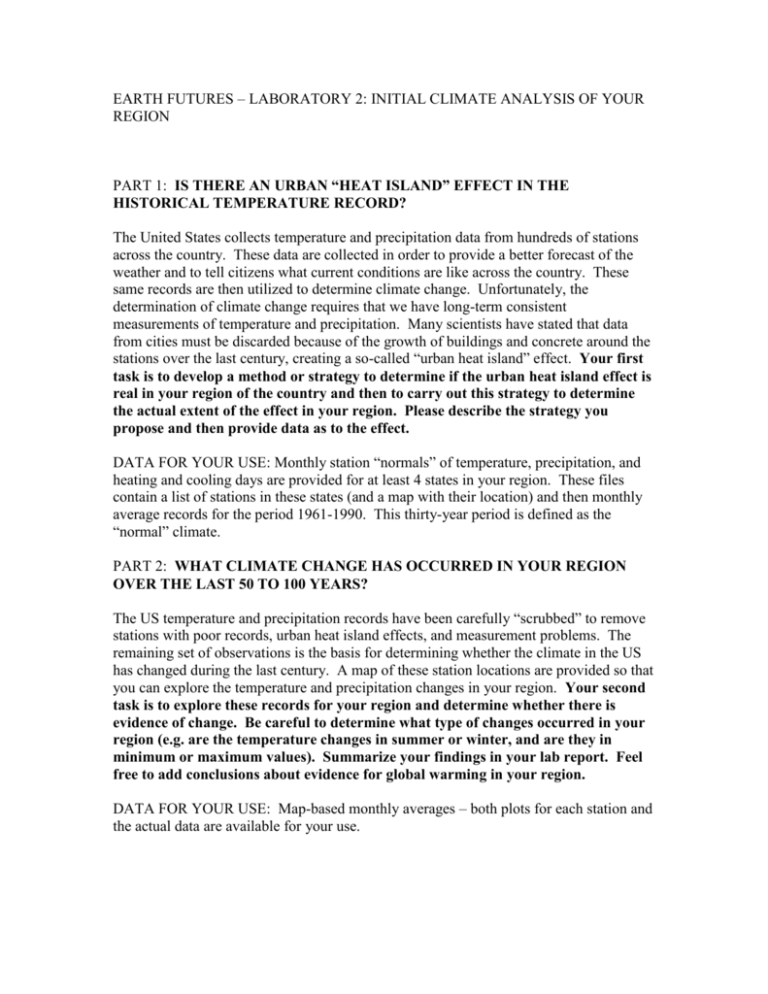
EARTH FUTURES – LABORATORY 2: INITIAL CLIMATE ANALYSIS OF YOUR REGION PART 1: IS THERE AN URBAN “HEAT ISLAND” EFFECT IN THE HISTORICAL TEMPERATURE RECORD? The United States collects temperature and precipitation data from hundreds of stations across the country. These data are collected in order to provide a better forecast of the weather and to tell citizens what current conditions are like across the country. These same records are then utilized to determine climate change. Unfortunately, the determination of climate change requires that we have long-term consistent measurements of temperature and precipitation. Many scientists have stated that data from cities must be discarded because of the growth of buildings and concrete around the stations over the last century, creating a so-called “urban heat island” effect. Your first task is to develop a method or strategy to determine if the urban heat island effect is real in your region of the country and then to carry out this strategy to determine the actual extent of the effect in your region. Please describe the strategy you propose and then provide data as to the effect. DATA FOR YOUR USE: Monthly station “normals” of temperature, precipitation, and heating and cooling days are provided for at least 4 states in your region. These files contain a list of stations in these states (and a map with their location) and then monthly average records for the period 1961-1990. This thirty-year period is defined as the “normal” climate. PART 2: WHAT CLIMATE CHANGE HAS OCCURRED IN YOUR REGION OVER THE LAST 50 TO 100 YEARS? The US temperature and precipitation records have been carefully “scrubbed” to remove stations with poor records, urban heat island effects, and measurement problems. The remaining set of observations is the basis for determining whether the climate in the US has changed during the last century. A map of these station locations are provided so that you can explore the temperature and precipitation changes in your region. Your second task is to explore these records for your region and determine whether there is evidence of change. Be careful to determine what type of changes occurred in your region (e.g. are the temperature changes in summer or winter, and are they in minimum or maximum values). Summarize your findings in your lab report. Feel free to add conclusions about evidence for global warming in your region. DATA FOR YOUR USE: Map-based monthly averages – both plots for each station and the actual data are available for your use.
